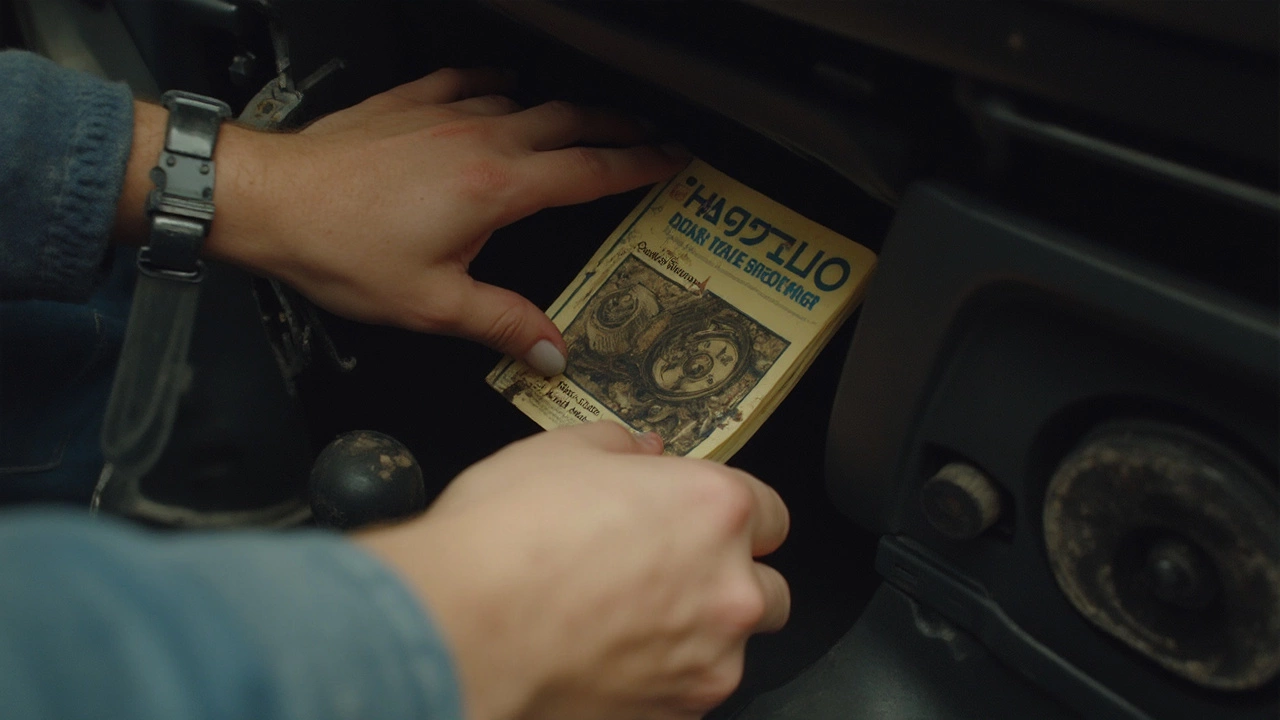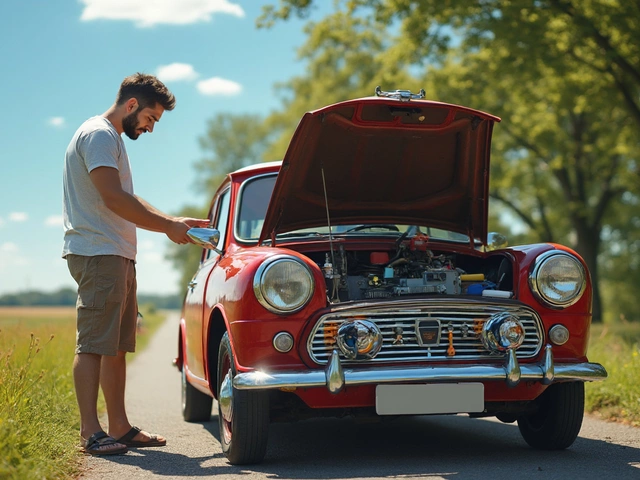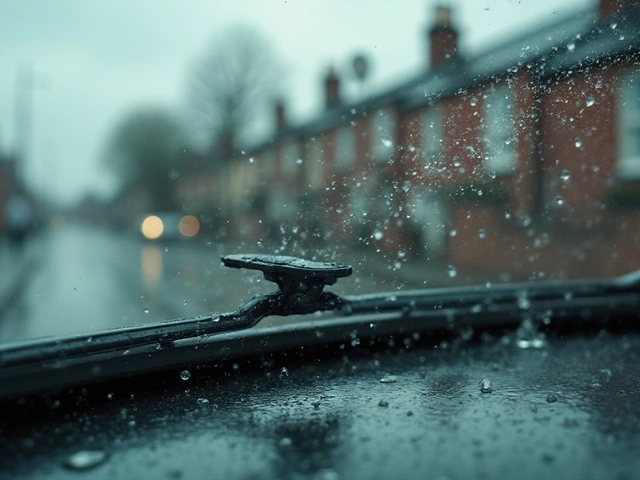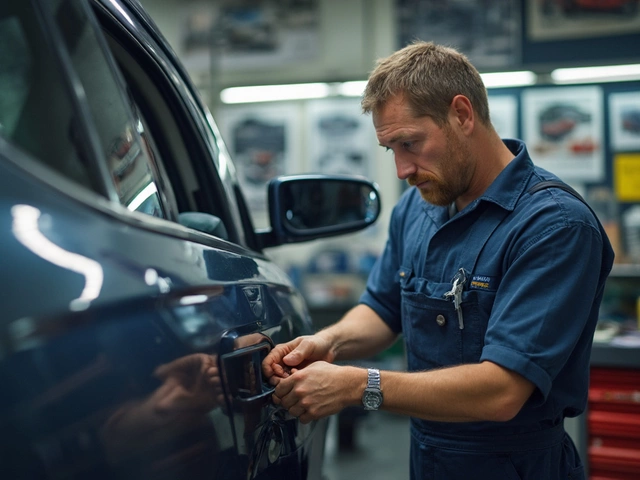Bam—a green traffic light, but your car just groans and barely moves. If you’ve ever hit the gas, felt the engine rev, but watched the speedometer refuse to budge, you know the panic of a slipping clutch. At first, you tell yourself it will go away. Sadly, slipping clutches never fix themselves. Auto shops will usually jump straight to: “Replace it.” But what if you can’t drop a month’s rent on parts and labor right now? Turns out, with a little patience and sweat equity, you’ve got some decent options before getting the clutch overhauled. Fixing a slipping clutch doesn’t always mean scrapping it. Sometimes it’s just worn cables, misadjusted parts, or minor leaks causing the drama. Let’s talk real fixes that might just keep you on the road for months (or even years) longer—and save you enough cash for way more exciting things than car parts.
Recognizing the Signs of a Slipping Clutch
A clutch doesn’t just randomly start slipping—there’s always a reason. The first trick is actually knowing for sure your clutch is the culprit. Ever noticed that weird burning smell after shifting, like someone’s frying eggs with motor oil in your cabin? That acrid scent is almost always a burnt clutch. Add in climbing RPMs with barely any gain in speed, and you’re looking at classic slip signals. Sometimes the car lurches or shudders, or you hear grinding when you try to shift. It isn’t magic or bad luck; it’s just a clutch showing its age or protesting bad adjustment.
Here’s a quick test: With the engine running and the parking brake set, push the clutch all the way in, shift to second, and slowly ease off the clutch while holding the brake. If the engine doesn’t stall but instead keeps running as if nothing’s happening, your clutch is definitely slipping. These warning shots usually start mild and get worse over days or weeks; ignore it long enough and you’ll be stuck in a parking lot somewhere, cussing at your car like I did (even Rufus gave me the side-eye that day).
It’s not always the clutch disc that’s dying. Sometimes, it’s the result of hydraulic fluid leaks, stretched clutch cables, or air bubbles in the system. Some modern cars have self-adjusting clutches that can get stuck, while older rides need manual tweaking that no one bothers to do after a while. If you’re seeing a low clutch pedal, or it feels spongy, flimsy, or takes forever to bite, there’s a good chance you’re not dealing with total clutch failure just yet. Spot the signs early enough and fixing a slipping clutch becomes a whole lot cheaper—even something you can tackle in your own garage.
Understanding What Causes Clutch Slippage
To patch up a slipping clutch, it pays to know what actually causes slip in the first place. The main offender is friction: your clutch disc is basically a big brake pad sandwiched between two metal plates. When it wears down, it can’t grip, and you get slip. But even a healthy disc will slip if something’s off in the system.
- Hydraulic Problems: If your car uses hydraulic fluid to operate the clutch, any leak or bubble can rob you of pressure. That means the clutch doesn’t engage all the way. Small leaks at the master or slave cylinders can quickly wear things down if not caught early.
- Cable Stretch or Adjustment: Older rides and some smaller cars have a clutch cable instead of hydraulics. Cables stretch over time or their adjustment nuts loosen. A loose cable keeps the clutch from engaging fully, leading to slip.
- Contaminated Clutch: Oil or transmission fluid leaks can soak into the clutch disc. Even a tiny amount can make the surface way too slick to grip properly. This is more common than you’d think—especially if you park in the same spot and start noticing dark puddles.
- Overheating: Hauling heavy loads, riding the clutch in traffic, or bad driving habits can fry the disc. The more heat, the faster the material degrades, even if the rest of the system is in decent shape.
- Misadjustments: Sometimes it comes down to the simple stuff—a misadjusted pedal, worn pivot points, or even a stubborn self-adjusting mechanism that needs convincing to reset.
Want an idea of how common this is? Stats show that about 10% of clutch failures in cars under 100,000 miles are fixable without a full replacement. Most people just don’t catch the real cause early enough, so things escalate.

DIY Fixes for a Slipping Clutch: Step-by-Step Solutions
Here’s the meat and potatoes: Can you fix a slipping clutch yourself, and does it actually last? Good news—you’ve got several moves to try, and a couple tools (mostly patience and dirty hands) can go a long way.
- Adjust the Clutch Cable or Pedal: Find your owner’s manual, and look for the clutch cable adjustment (usually where the cable meets the clutch fork, or behind the pedal). Tighten until you get minimal slack, but not so much that the clutch engages constantly. This is often enough to restore grip in older cars with mechanical linkages.
- Bleed and Top Off Hydraulic Fluid: On a hydraulic setup, open the clutch master cylinder and check the fluid. If it’s low or dirty, top it off and bleed the system to remove air. Use the correct fluid type—check the cap or the manual, as the wrong fluid can wreak havoc.
- Clean Any Leaks: If you see oil or fluid on the transmission bell housing or clutch area, fix the leak asap. Even if it’s a quick patch, like a new seal or gasket, it could be the difference between a useable clutch and a dead one. Sometimes you can get away with cleaning the area and clutch face using brake cleaner, but this is hit or miss.
- Clutch “Burnish” Trick: This sounds weird, but lightly “burnishing” (bedding in) a contaminated clutch sometimes restores life. In a safe spot, put the car in a high gear, set the handbrake, and gently slip the clutch with a little throttle for 5-10 seconds. It can help burn off light contamination, but it’s not magic—use it as a last resort.
- Check for Pedal Free Play and Linkage Wear: Worn bushings or over-tight linkages can prevent full clutch engagement. Lubricate moving parts and check for excessive play in the pedal mount or clutch fork.
- Reset Self-Adjusters: Some cars (especially European models) have self-adjusting clutch pedals that can get stuck. Follow your manual’s instructions for resetting the mechanism. Sometimes, just pressing the pedal down with force a few times can reset it.
Here’s a quick table with some DIY fixes and how much time/money you might save:
| Fix | Avg. Time | Cost (USD) | Success Rate |
|---|---|---|---|
| Clutch Cable Adjustment | 20 min | Free | 50% |
| Hydraulic Fluid Bleed | 45 min | $10 | 30% |
| Leak Cleanup | 1 hr | $5 | 15% |
| Burnish Trick | 10 min | Free | 10% |
| Pedal Free Play Adjust | 15 min | Free | 25% |
No fix is guaranteed for severe cases. But if you’re catching early symptoms, you’d be surprised how often you can buy yourself some extra time. I managed to get another six months out of my beater with nothing more than a cable tweak and some brake cleaner on the clutch face—got to stash away plenty for a real fix down the line.
Best Practices to Prolong Clutch Life and Minimize Slipping
So maybe the fixes worked and the car’s running again. The next thing is to keep it that way. Funny thing: most clutch failures are as much about driver habits as they are about parts. My dog Rufus doesn't drive (yet), but if he did, I’d bet he’d keep two paws off the clutch pedal at stoplights—a habit that ruins more clutches than you’d think.
- Don’t Ride the Clutch: Keep your foot off the pedal when you’re not shifting. Even a light touch can cause the clutch to slip slightly and heat up, shortening its life.
- Use Neutral at Stops: When you’re waiting at a light or in heavy traffic, pop the car into neutral and let off the clutch. Holding it in for several minutes keeps the throwout bearing engaged, which wears it out fast.
- Shift Smoothly: Learn to match your revs and shift gears smoothly. Jerky shifts or holding the clutch halfway engaged is tough on the friction material.
- Avoid Towing or Carrying Heavy Loads Excessively: Clutches hate weight. If you have to haul stuff, accelerate gently and avoid stalling at all costs.
- Keep Fluids Clean: Regularly check and change clutch or transmission fluid as needed. Dirty fluid leads to sticky hydraulics or contamination that eats away at the clutch.
- Fix Small Leaks Right Away: Even minor oil or fluid leaks can ruin a clutch quickly. Nip them in the bud before things get ugly.
Want some perspective? Studies by auto clubs in the US and UK have shown that smart driving alone can extend a clutch’s lifespan by up to 40%. That’s real-world stuff. If you can’t shake a bad habit, try reminding yourself with a sticky note on the dash (like “NO RIDING!”). Weird? Maybe. Effective? Definitely.

When to Give Up and Replace the Clutch (and How to Save on Repairs)
No tip, trick, or home brew can save a clutch that’s completely destroyed. If you’re still slipping badly after trying everything, and the car won’t move under load, it’s probably time to admit defeat. The good news is, by trying DIY fixes early, you might have prepared yourself for replacement on your own timeline—not in the middle of rush hour.
When you do need a new clutch, it pays to shop smart. OEM parts are nice but not always needed, especially if your car isn’t worth a fortune. Quality aftermarket kits can cost half as much as original parts, and if you’re up for it, lots of enthusiasts swear by tackling the job with a friend (be ready to get greasy). Labor is the real bill; clutch swaps often take 6-8 hours, which is why pros charge big bucks for it. Some local shops will cut you a deal if you bring your own parts, or if you’re in a club with other gearheads, trading help for help can slash labor costs. There’s no shame in getting a cheap clutch, especially on a car with 180k miles and dents on every panel. Just don’t ignore the signs and risk a breakdown—that’ll always cost more than planned.
Here’s the bottom line: you might not avoid replacement forever, but catching a slipping clutch early and knowing a few real tricks can buy you months, sometimes years. That’s more time on the road and more money in your pocket—for dog treats, road trips, or whatever else beats paying for car repairs every season.






